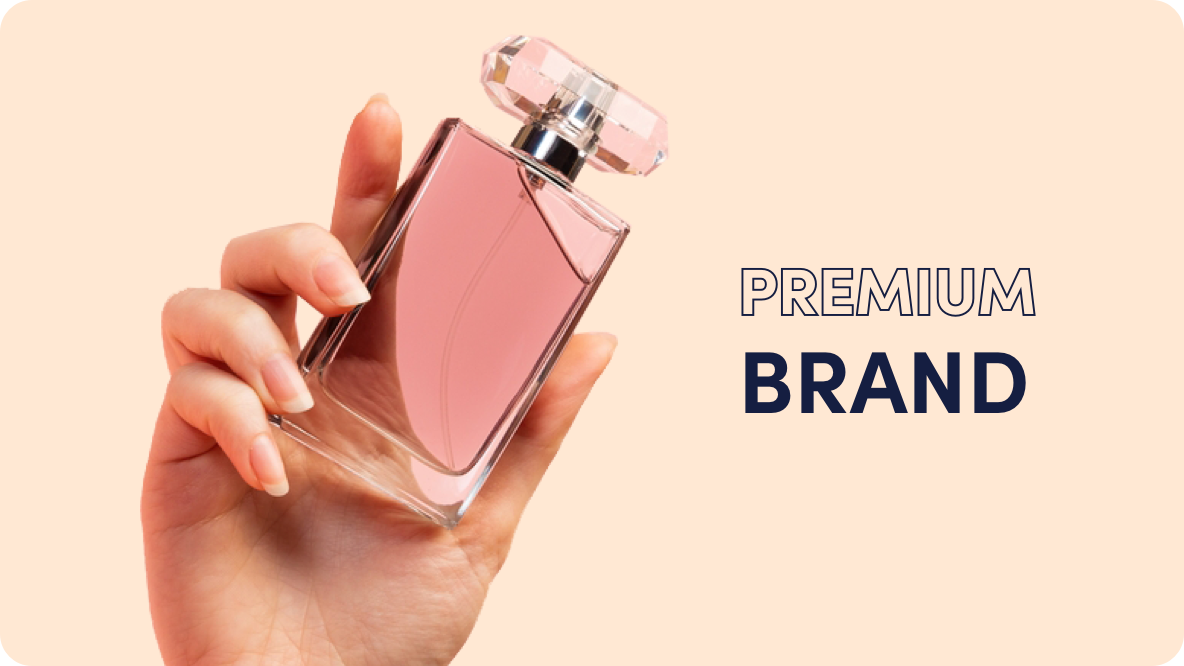5 Steps to Building A Premium Brand

Branding is an all-encompassing process. Knowing how to market your business, your message, your goals, your products, and what you represent to the business world and your customers all depends on how well you develop your brand.
How, then, can you take brand building a step further?
Businesses looking to build a premium brand must ask themselves this question because the title ‘premium brand’ is reserved for those who are usually a level or two higher than the rest.
Premium brands may require more investment, but they can also bring you better ROI. This means building the brand well, from the very start. How? Here are five steps to building a premium brand that will tell you everything you need to know.
What Does it Mean to Be A Premium Brand?
Before we jump into how you can build your premium brand, let’s talk about what it means to be a “premium brand” in the first place.
Many businesses and consumers conflate a “premium” brand with luxury. While this may be part of what premium means, it is not confined to just luxury goods or expensive price tags.
Premium branding really means that consumers are willing to make tradeoffs to experience the brand. Sometimes these tradeoffs come naturally, without even thinking about it, and other times they are conscious and intentional.
For example, a clothing brand may be considered ‘premium’ because its products are better quality, or because they are made from ethically-sourced fabric, using socially aware production processes.
Conversely, think of a premium car brand. It’s likely renowned for its high quality, luxury, or specialized features, or perhaps the cache of an iconic history in the motor racing industry.
Both the premium car brand and premium clothing brand require their consumers to spend more than they would on competing, non-premium brands. Moreover, the tradeoff for buying a premium car is much higher than for premium clothing – a premium car is more expensive than even the fanciest designer coat.
Usually, a premium brand can be spotted by its premium price point (or score), as well as how many sales are made to consumers who have decided that the higher price is worth the tradeoff of buying the brand’s product. A “means score” measures the consumers’ ability to engage with a premium price point, while a “mindset score” measures the consumer’s attitude to actually make the purchase.
Whether you are selling cars or clothes, you need to be aware of where your brand lands on the premium spectrum in your specific market. What is your premium ranking? Are you on the higher end? Are your products the most exclusive? Or perhaps you fall in the middle brand range? To answer these questions, take a look at the Kadence luxury index report to gain a perspective of the premium brand industry and where your brand fits into the market.
The Costs of Going Premium
Having a premium brand does not necessarily mean your business will be more profitable. Each of the benefits of having a premium brand – higher quality products, better materials, ethical production – can be costly today, but may well offer a large return on investment down the line. Also, higher production costs often mean that premium brands are less accessible than regular brands, which makes them more ‘exclusive’ – financially and conceptually. Keep this in mind as you begin building your premium brand.
Five Steps to Building a Premium Brand
The following are simple but important steps to build a thriving premium brand:
First and foremost, communicate confidence
Premium bands are exactly that – premium – so it is important to act like it. Be sure to make your brand stand out by showing that you are not only exclusive in the image you portray, but you also offer services and/or products that cannot be found just anywhere. Compare your brand to… your brand; show how you are striving for excellence in a league of your own (i.e. “our best product yet,” “our most innovative creation to date,” etc). When your brand exudes confidence, consumers are drawn to it and will want to become a part of it, in any way they can.
Make sure you communicate quality
Most brands will claim that they offer quality products and services. However, as a premium brand, your level of quality must outshine all others. Be sure to showcase exactly what makes your product so special. For example, if you sell beauty products, make a point to highlight the high-end, rare, hyper-effective, or expensive ingredients. Show how it helps certain skin problems and back it up with clear, researched data. If you sell apparel, highlight the benefits of the fabric, craftsmanship, production, and even sourcing. Tell your story and show why your products are worth more than the leading mass brands.
High-quality design goes a long way
This includes your website, social media pages, product packaging, YouTube channel, and everywhere your brand is presented. Communicate a premium brand by creating a premium look and feel. Consumers respond well to attractive and aesthetically pleasing designs, especially high-quality images and videos that take up a lot of space. Some of the most prominent premium brands use this technique, and not only attract a lot of visitors but also get high conversions. You can rebuild your premium site yourself, or use a web host service to create the perfect look for you and your premium brand.
Be strategic about distribution and pricing
No matter what you want your brand to say, you have to think about your actions and what they say as well. Where your products or services are sold, how they are merchandised, and even their cost can tell potential consumers an important story about the brand you’ve built. For example, if you want your brand to be considered high-end and luxe, your products should not appear on the lowest shelf, should not be heavily discounted, and should not be cheaper than other prominent premium brands. This rule still applies even when you only sell digitally: is your brand shown on e-commerce websites with a high-quality image and appropriate traffic? Are the accompanying images high-quality? Is the pricing where it should be for your brand type? Think about these criteria and more as you begin distributing your products or services and setting prices.
Consider including up-market sub-brands
Finally, a great way to elevate your brand’s image is to offer a sub-brand alongside it. A sub-brand is an extra product line or a special edition product or service that is offered for a limited time. The key is to position it as a more premium offering than your main brand. When you add an exclusive sub-brand, consumers will associate your main brand with the premium one, elevating your overall brand image.
As you can see, building a premium brand is not necessarily difficult, but it does take a certain level of focus, commitment, and even risk. While your premium brand may not make your business more profitable instantly, it will launch it to a higher level that can lead to bigger profits over time.
Remember, creating a premium brand is all about bringing your current brand up a few notches, which means paying attention to detail. Bottom line: stick to the basics, elevate what you can, get creative where it counts, always put quality over quantity, and show consumers why you’re the best choice for the product or service you provide. Happy branding!











